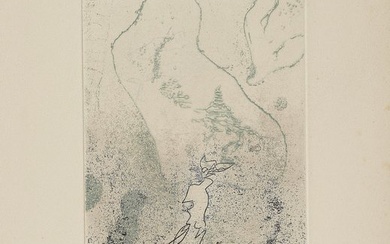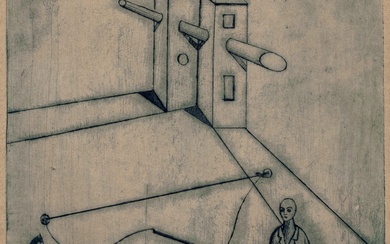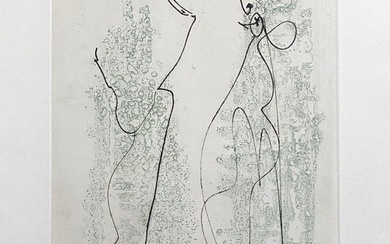MAX ERNST (Brühl, Germany, 1891 - Paris, France 1976). No title. Lithograph on paper. Copy 25/79.
MAX ERNST (Brühl, Germany,1891 - Paris, France 1976).
Untitled.
Lithograph on paper. Copy 25/79.
Signed and justified in pencil.
Measurements: 46,5 x 34,5 cm; 63 x 51 cm (frame).
German artist who became a naturalised French citizen and is considered a fundamental figure in both the Dada movement and Surrealism. Throughout his varied artistic career, Ernst was a tireless experimenter, using an extraordinary diversity of techniques, styles and materials. In all his works he sought the ideal means of expressing, in two or three dimensions, the extra-dimensional world of dreams and imagination. In 1909 he entered the University of Bonn, where he studied philosophy, art history, literature and psychiatry. His first works date from this period, whose Expressionist affiliation reveals the imprint of his friendship with August Macke. In 1922 he moved to Paris, where he began to paint Surrealist works in which solemn human figures and fantastic creatures inhabit Renaissance spaces executed with detailed precision (L'eléphant célèbes, 1921, Tate Gallery, London). In 1925 he invented frottage, and later experimented with grattage. In 1930, he made his film debut in The Golden Age (L' Age d' Or), the second surrealist film by the Spanish director Luis Buñuel. His work would have a great influence on a multitude of artists.
View it on
Sale price
Estimate
Reserve
Time, Location
Auction House
MAX ERNST (Brühl, Germany,1891 - Paris, France 1976).
Untitled.
Lithograph on paper. Copy 25/79.
Signed and justified in pencil.
Measurements: 46,5 x 34,5 cm; 63 x 51 cm (frame).
German artist who became a naturalised French citizen and is considered a fundamental figure in both the Dada movement and Surrealism. Throughout his varied artistic career, Ernst was a tireless experimenter, using an extraordinary diversity of techniques, styles and materials. In all his works he sought the ideal means of expressing, in two or three dimensions, the extra-dimensional world of dreams and imagination. In 1909 he entered the University of Bonn, where he studied philosophy, art history, literature and psychiatry. His first works date from this period, whose Expressionist affiliation reveals the imprint of his friendship with August Macke. In 1922 he moved to Paris, where he began to paint Surrealist works in which solemn human figures and fantastic creatures inhabit Renaissance spaces executed with detailed precision (L'eléphant célèbes, 1921, Tate Gallery, London). In 1925 he invented frottage, and later experimented with grattage. In 1930, he made his film debut in The Golden Age (L' Age d' Or), the second surrealist film by the Spanish director Luis Buñuel. His work would have a great influence on a multitude of artists.







